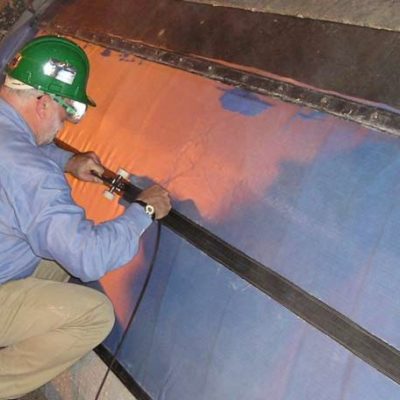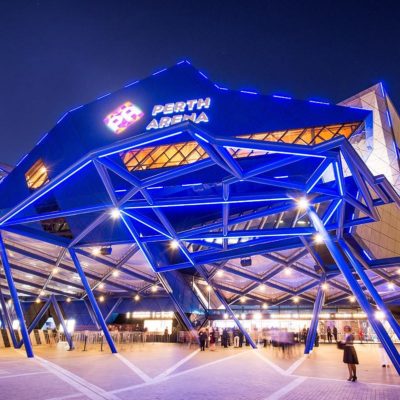What is the lead time once a quote is requested?
Our customers will always be contacted within 1 business day that their request for quote has been received. You can contact us for a quote via our contact enquiry form, email, or call our team on 1300 786 489.
What is the lead time for sample production?
Lead time is affected greatly by the complexity of the product. If the customer is after a simple profile made from a single material, Boss generally allow a 2-week lead time for new tooling to be manufactured. A further 2 weeks must be allowed for the tool development, sample production and fulfilment of the order.
If a product requires multiple materials (co-extrusion), double sided tape, extremely complicated profiles, or a special-order material, expected lead times will be provided to the customer.
What is the general turnaround time for producing extruded plastic or rubber?
Our general lead time after receiving an order is 2 weeks, however this can vary depending on the complexity of the job.
Do you stock parts?
Generally, Boss is a volume manufacturer. Meaning that we make to order and do not hold stock. We do however, sit on a full range of solar pool heating products and a limited range of marine fenders.
Is there a minimum amount on an order?
Yes, as a volume manufacturer we will always quote a minimum order quantity, and if required, tooling price depending on the product in question.
What does extrusion mean?
Extrusion is a manufacturing process used to make 2-dimensional shaped profiles into a continuous length, extruded profiles are commonly consumed as pipes, tubes, drinking straws etc. The process entails forcing the desired material through a special tool (die) to form the 2D profile shape. The profile “cut-out” in the die determines the shape of the final extruded profile.
Boss Polymer has the machinery, equipment, and expertise in our Melbourne plant to produce a wide range of rubbers and plastic profiles in an extensive range of polymer compounds to satisfy virtually any requirement.
What are rubber extrusions used for?
Thermoset and Thermoplastic rubber extrusions are used in almost every industry in a wide range of applications.
rubber extrusions are found everywhere in both domestic and commercial applications. Around your home you will find extrusions sealing doors, windows, oven, fridge and shower. They are also extensively used in your car as weather seals and as hoses in the engine bay.
Commercial extrusion applications include expansion joints in bridges, car parks, noise barriers, highways, plaza decks and pedestrian bridges.
Which Industries are rubber extrusions generally made for?
Rubber extrusions are used in virtually every industry, including:
|
|
Boss Polymer services all the above industries with tailored support and advice.
Which industries are plastic mouldings made for?
Plastic moulded parts are used in just about every facet of our daily life. You will find them in your kitchen in the form of plastic cooking utensils, Tupperware containers and ice cube trays. In your car you will find them on virtually every inner and outer surface, from cosmetic clips and covers to critical engine components. It is the preferred manufacturing method to economically produce 3D shaped components in large quantities at a constant size, quality, and price.
What is plastic injection moulding?
The process generally involves heating the plastic compound within a temperature-controlled chamber inside the injection moulding machine until the plastic is in a molten plasticised state. The plasticised material is then injected into a moulding tool where it flows into voids (cavity/s) at very high pressure. The moulding tool is generally water cooled and mounted between a hydraulic clamping mechanism under a very high tonnage force until the molten plastic material within the tool has solidified. Once solidified the tool is hydraulically opened and the required plastic mouldings are ejected from the cavities of the tool. The process is generally repeated in a continuous, automated and controlled cyclic process.
How much does injection moulding cost?
The primary determining factors in the unit cost of a plastic moulded product is generally based on the total quantity that will be produced over a time period.
As a general rule, the cost of a plastic moulding is relative to the number of cavities within the moulding tool. The more cavities the more plastic components can be moulded at the same time and hence the processing cost is less. However, the more cavities the greater the complexity and investment cost for the tool. For example, if you wanted 1,000 buttons per year, a single cavity mould would be required, making one button per machine cycle. In that case, the mould may cost approximately $3,000.
If your requirement was for 1,000,000 parts per year of an intricate part, it may be necessary to build a multi -cavity hardened tool. Of course, this type of tool comes with a cost that could exceed $40,000 or significantly more.
Other governing factors are a combination of the part size, component complexity, material, and anticipated quantities. You can contact us for a quote via our contact enquiry form, email, or call our team on 1300 786 489.
What factors must be considered when making a part for plastic and rubber mouldings?
- What is the application and function of the part? Whether the part requires flexibility or rigidity is a major consideration when selecting the appropriate material. Rubber has a wide range of hardness’s, from very soft to very hard. Plastic may be a better option when an extremely hard or rigid material is needed, while rubber is typically more flexible than most types of plastics.
- Operational environment of thee partIf the part will be operating in a harsh environment, such a seal in an oven, the material selected must be able to withstand high temperatures of 200°C or more over a long period of time. Several thermoset rubber materials can consistently perform at such temperatures such as Silicone and Viton, while general-purpose plastics perform poorly at elevated temperatures.
- The Aesthetics of the PartFor many consumer products, the appearance of the finished component is critical. As a result, thermoplastic processing is generally the process of choice, as it provides a high quality of finish and consistency. Additionally, Thermoplastic rubbers/plastics are generally available in a wide range of colours while thermoset rubber is generally only available in black.
- Production Cost and Volume ConsiderationsWhen low costs and high production volumes are required, plastic generally delivers faster cycle times and a lower material costs when compared to thermoset rubber. This is partly due to the different processes involved.
In general, the cycle time for plastic moulding is much faster than a thermoset rubber, measured in seconds for plastic versus minutes for rubber.
What are injection moulds made of?
Typically, Injection moulds are constructed from hardened steel, pre-hardened steel or aluminium. Beryllium-copper alloy can also be used when superior heat transfer is required on cores/cavities.
The choices of materials are usually determined by your tool budget and expected life of the tool.
How long do injection moulds last for?
The choice of material used to manufacture the tool is one of the biggest determining factors when considering the life of an injection moulding tool. The generally accepted life expectancy of different materials are as follows:
- Moulds made of P20 steel; minimum of 300,000 shots
- Moulds made of hardened H13 steel; minimum of 500,000 shots
- Moulds made of high-grade Aluminium; generally, 30,000 shots can be expected depending on the amount of moving parts within the tool.
Other factors when considering life expectancy can be material used, skill of the mould setter, maintenance carried out on the tool and the quality of toolmaking that was carried out when manufacturing the mould.
Contact us for a quote via our contact enquiry form, email, or call our experienced team on 1300 786 489.






